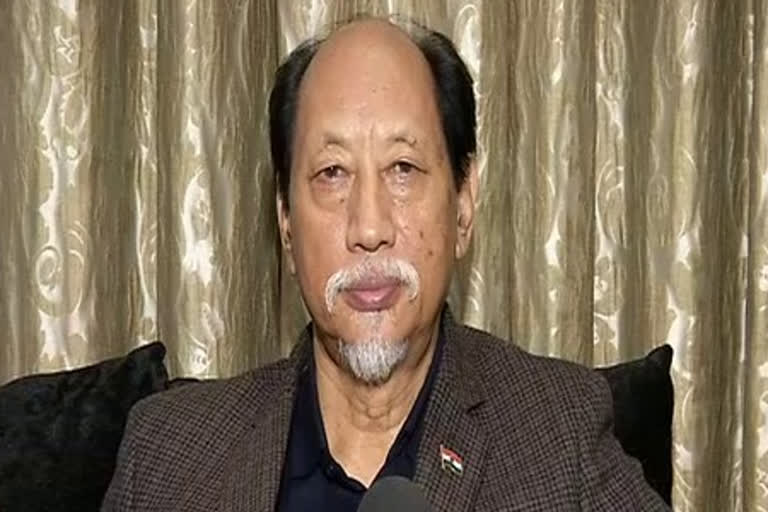New Delhi: From a situation of stalemate, the Naga negotiation process has further slid to a state of friction between the government and the insurgent outfits, a point from where hostility is the next logical step.
In a sure-shot sign of the progressive degradation of the status of the 23-year-old ongoing negotiations process between the National Socialist Council of Nagalim (Isak-Muivah) (NSCN-IM) faction and the government, the Nagaland government on Tuesday ordered all its employees to furnish a declaration within a month, providing information and details of any family member or relatives who are involved with ‘underground’ organisations.
But what is of concern here is the profiling of state government employees.
The information has been sought in a ‘confidential’ official memo dated July 7, 2020, and issued by the Nagaland chief secretary to all departments, while the last date for submission is given as August 7, 2020.
The letter, accessed by ETV Bharat orders that if there is indeed a family member or relative who is a member of any ‘underground’ organisation, that individual and the organisation has to be named, the nature of the relationship that the employee has with the individual revealed as also the position or rank held by that individual within the ‘underground’ hierarchy.
While the official communiqué is indicative of the spread ‘underground’ organizations have in Naga society, it is possible that such information furnished may also be held against government employees who may have ‘underground’ relatives and then be used in a way to put pressure on the ‘underground’ member through the relatives.
This development follows a letter written by Nagaland’s governor RN Ravi to state chief minister Neiphiu Rio on June 6, 2020, stating that the law and order in the state had collapsed due to large-scale extortion and illegal activity by ‘armed gangs’—in possible reference to at least six ‘underground’ organizations in the state.
Seeking total powers to appoint senior police and administrative officials in the insurgency-hit state Governor Ravi wrote: “In such a situation, I can no longer abstain from my constitutional obligations for law and order in the state under Article 371 A (1) (b) of the Constitution of India, I hereby propose that hereafter important law and order decisions like transfer and posting of officials entrusted with law and order responsibilities of and above the district level will be after the approval of the governor.”
Mainly, the government’s negotiations are going on with the National Socialist Council of Nagalim (Isak-Muivah) (NSCN-IM) faction that began in 1997 but have failed to provide a breakthrough till now.
NSCN (IM) is believed to be the biggest Naga underground outfit with more than 7,000 cadres most of whom are well-equipped with sophisticated weapons.
Over the last 23 years, talks with the NSCN (IM) had taken place in New Delhi and Nagaland as well as in exotic locations in Paris, Geneva, Zurich, Amsterdam, Chiang Mai (Thailand), London, Osaka, Malaysia, and The Hague.
Since then, the NSCN (IM) has considerably watered its original Naga demand for complete sovereignty and independence to ‘shared sovereignty’. The government has also refused to the NSCN (IM) demand for a separate constitution and a largely symbolic separate national flag.
In 2015, a framework agreement was signed between the two sides amid much fanfare spurring hopes but over time instead of progress there has been degradation in the status of the negotiations.
After the Basque insurgency in Spain, the Naga insurgency movement is believed to be the world’s second-oldest running insurgency movement having taken shape in the 1950s. Also said to be the ‘mother of all insurgencies’ it contributed in a big way to the formation of insurgency movements in Manipur, Assam, Tripura, and Meghalaya—neighbouring states in the Northeast India region.
Also Read: What Provoked Nagaland Governor R N Ravi To Write Letter to Chief Minister?



